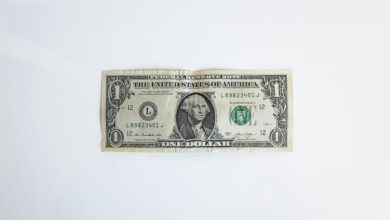Navigating the Forex Landscape: The Interplay of Interest Rates, Geopolitics, and Central Bank Strategies

In the dynamic world of foreign exchange (forex) trading, understanding the intricate relationships between economic factors and currency values is crucial for both novice and experienced traders. This article delves into the multifaceted impact of interest rates on currency exchange rates, illuminating how fluctuations in these rates can influence trading strategies and market behavior. We will explore the profound effects of geopolitical events on forex markets, highlighting the volatility and uncertainty that can arise during turbulent times. Additionally, we will examine the pivotal role of central banks in shaping currency values, and how their policies can create opportunities for savvy traders. As inflation continues to be a focal point for economies worldwide, we will discuss its implications for trading strategies and the concept of carry trading, where investors seek to profit from interest rate differentials. With the rise of digital currencies, we will also consider their impact on traditional forex markets and how economic indicators can be leveraged to predict currency movements. Join us as we navigate these essential topics in the ever-evolving landscape of forex trading, equipping you with the insights needed to make informed decisions in this complex arena.
- 1. "Interest Rates and Currency Exchange: Unraveling the Connection"
- 2. "Geopolitical Influences: Navigating Forex Markets in Turbulent Times"
- 3. "Central Banks and Currency Valuation: The Power Players in Forex Trading"
1. "Interest Rates and Currency Exchange: Unraveling the Connection"
Interest rates play a crucial role in determining currency exchange rates, acting as a key driver for the forex market. When a country's central bank adjusts its interest rates, it directly influences the flow of capital into and out of that country. Higher interest rates typically attract foreign capital as investors seek better returns on their investments, leading to an appreciation of the currency. Conversely, when interest rates are lowered, the currency may depreciate as capital flows out in search of more attractive yields elsewhere.
The relationship between interest rates and currency values is often explained through the lens of the interest rate parity theory. This theory posits that the difference in interest rates between two countries will be reflected in the forward exchange rates of their currencies. For instance, if the U.S. Federal Reserve raises interest rates while the European Central Bank keeps rates unchanged, the U.S. dollar (USD) may strengthen against the euro (EUR). This occurs because investors will prefer to invest in USD-denominated assets, anticipating higher returns.
Moreover, interest rates can also signal the central bank's outlook on economic growth and inflation. A rise in interest rates may suggest confidence in the economy's strength, which can further bolster the currency. Conversely, low or declining rates may indicate economic weakness, leading to a depreciation of the currency as investors seek stability elsewhere.
In addition to attracting foreign investment, changes in interest rates impact consumer behavior and spending. Higher rates can dampen borrowing and spending, while lower rates tend to stimulate economic activity. This interplay between consumer behavior and interest rates can create feedback loops that further reinforce currency movements.
In summary, the connection between interest rates and currency exchange is multifaceted, encompassing capital flows, investor sentiment, economic indicators, and central bank policies. Understanding this relationship is vital for forex traders and investors seeking to navigate the complexities of the global currency markets.
2. "Geopolitical Influences: Navigating Forex Markets in Turbulent Times"
Geopolitical events play a significant role in shaping forex markets, often leading to increased volatility and uncertainty. Factors such as political instability, military conflicts, trade tensions, and changes in government policies can create fluctuations in currency values. Traders must remain vigilant and informed about these developments, as they can lead to rapid shifts in market sentiment.
For instance, when tensions escalate in a region, investors typically seek safe-haven currencies like the US dollar, Swiss franc, or Japanese yen. This flight to safety often results in appreciation for these currencies while causing declines in those perceived as riskier, such as emerging market currencies. Conversely, positive geopolitical developments, such as peace treaties or trade agreements, can boost investor confidence, leading to a stronger performance for the currencies of the involved nations.
Additionally, geopolitical events can influence central bank decisions, as policymakers may adjust interest rates or implement monetary policies in response to external pressures. For example, a country facing sanctions may see its currency weaken due to reduced foreign investment and economic instability. In such cases, traders must analyze not only the immediate effects of geopolitical events but also the potential long-term implications for monetary policy and economic health.
Traders should employ a variety of strategies to navigate these turbulent times. Staying updated on current events, analyzing market sentiment, and utilizing technical analysis tools can help identify potential trading opportunities. Incorporating geopolitical risk assessment into trading strategies allows for more informed decision-making, as traders can better anticipate market reactions to unfolding events.
In summary, understanding the interplay between geopolitical influences and forex markets is essential for traders looking to capitalize on currency fluctuations during uncertain times. By recognizing the significance of these events and adapting their strategies accordingly, traders can navigate the complexities of the forex landscape effectively.
3. "Central Banks and Currency Valuation: The Power Players in Forex Trading"
Central banks play a pivotal role in determining currency values and influencing forex markets. As the institutions responsible for managing a nation’s monetary policy, they have the authority to set interest rates, control money supply, and intervene in foreign exchange markets. Their decisions can lead to significant shifts in currency valuation, making them key players in forex trading.
One of the primary tools used by central banks is the adjustment of interest rates. When a central bank raises interest rates, it typically leads to an appreciation of the national currency. Higher rates attract foreign capital seeking better returns, increasing demand for the currency. Conversely, lowering interest rates can lead to depreciation, as investors may seek higher yields elsewhere. Traders closely monitor central bank announcements and economic indicators that signal potential rate changes, as these can create substantial volatility in currency pairs.
In addition to interest rates, central banks may engage in quantitative easing or tightening to stimulate or cool down the economy. Quantitative easing involves purchasing government securities to inject liquidity into the economy, which can weaken the currency. On the other hand, tightening measures may involve selling these securities, potentially strengthening the currency. These actions reflect central banks' responses to economic conditions, including inflation, unemployment, and GDP growth, and traders often analyze these conditions to forecast currency movements.
Central banks also intervene directly in the forex market to stabilize or influence their currency's value. Such interventions can include buying or selling currencies to counteract excessive volatility or to achieve specific economic goals. For instance, if a country’s currency is rapidly appreciating, making exports less competitive, the central bank may sell its currency to lower its value. Traders need to stay informed about these interventions, as they can lead to sudden and unpredictable market changes.
Furthermore, the communication strategies employed by central banks, known as forward guidance, are essential for influencing market expectations. By signaling future policy intentions, central banks can shape traders' perceptions and actions. For example, if a central bank indicates a commitment to maintaining low interest rates for an extended period, it can lead to a depreciation of the currency as traders adjust their expectations accordingly.
In summary, central banks are critical power players in forex trading, influencing currency valuation through interest rate adjustments, monetary policy tools, direct market interventions, and effective communication. Their actions and statements are closely scrutinized by traders, as they significantly impact market dynamics and trading strategies.
In conclusion, the intricate relationship between interest rates, geopolitical events, and central bank policies plays a pivotal role in shaping currency exchange rates and, consequently, forex trading strategies. As we've explored, fluctuations in interest rates directly influence currency values, creating opportunities for traders to capitalize on these changes through strategies like carry trading. Additionally, geopolitical events can introduce volatility, requiring traders to stay vigilant and adaptable in their approaches.
The rise of digital currencies further adds complexity to the traditional forex landscape, challenging traders to reassess their strategies in light of evolving market dynamics. Economic indicators remain essential tools for predicting currency movements, allowing traders to make informed decisions based on data-driven insights.
Ultimately, successful forex trading hinges on a comprehensive understanding of these interrelated factors. By considering interest rates, geopolitical influences, central bank actions, inflation, and emerging digital assets, traders can navigate the complexities of the forex market more effectively. Staying informed and agile will be crucial as we move forward in an increasingly interconnected and rapidly changing financial world.





